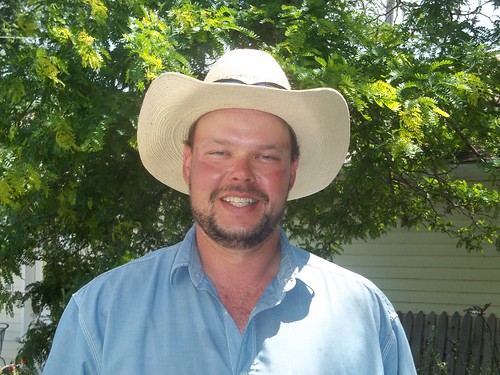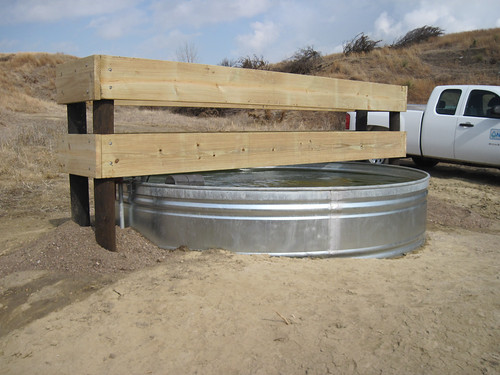
Wade Kloepping has made several conservation improvements to his farm.
A rich background in agriculture helped Wade Kloepping make the decision to come home to Dawson County after college and take over the family farm near Eustis, Nebraska.
Two years before graduating from the University of Nebraska-Lincoln, Kloepping’s dad passed away; he was the manager of the family’s farming operation. Wade has since taken over that role. As a beginning farmer, he aimed to improve the stocking rate of his pasture, advance forage productivity and increase the amount of native plants.
After evaluating the land, Kloepping concluded that the thick stand of Eastern Red Cedar trees and providing fresh water would be limiting factors when trying to graze the pasture. Kloepping contacted his local USDA Service Center for assistance. There, Resource Conservationist Teri Edeal with the Natural Resources Conservation Service (NRCS) worked with Kloepping to develop a conservation plan that helped him meet his goals. She also explained the various conservation programs available.
Edeal worked with him to develop three main solutions to improve the grazing land: remove cedar trees, install a pipeline to carry water for livestock and build an exclusion fence. Edeal suggested Kloepping enroll in NRCS’ Environmental Quality Incentives Program (EQIP) to help pay for part of the project. Edeal also informed Kloepping he was eligible for additional funding assistance through NRCS’ Beginning/Limited Resource Farmer program.
EQIP is a voluntary conservation program available from NRCS to private landowners and operators. Through EQIP, farmers and ranchers may receive financial and technical help to install conservation practices on agricultural land. Beginning farmers are eligible for an increased payment rate to purchase materials and services needed to implement conservation practices included in their EQIP contract.
NRCS technicians worked with Kloepping to reduce his cedar tree stand and install a 3,200-foot pipeline to provide fresh water for his livestock. Two water tanks were put in to complete the livestock watering system.
To control grazing, Kloepping installed fencing, creating five paddocks to rotate cattle through the pasture. Having cattle rotate on different pastures helps give plants time to rest and recover from grazing, which increases forage production and helps maintain rangeland, especially during times of drought.
Not only did Kloepping improve his farming operations, but he also made a significant economic contribution to his local community. When cutting and piling the cedar trees to burn, the young farmer hired a local contractor. Another local contractor was also hired to install the pipeline and cattle tanks, which were purchased from Kloepping’s local cooperative.
To get started with NRCS, visit www.nrcs.usda.gov/GetStarted.

One of the livestock tanks installed through EQIP funding with wooden “neck guards” installed through the tank help keep calves and cattle out of the tank, and also prevent cattle from rubbing on the hydrants and floats.
No comments:
Post a Comment
Note: Only a member of this blog may post a comment.